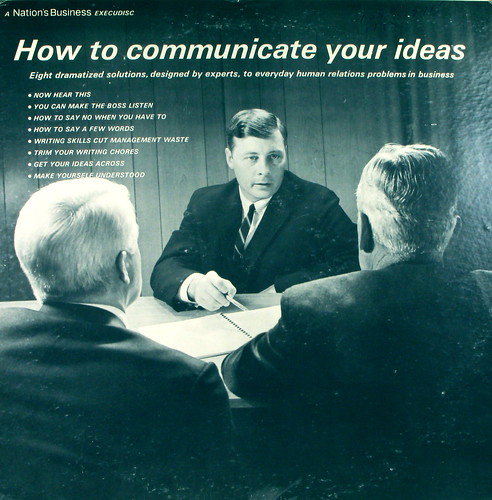This post contains quotes from KM teams about building a communication strategy to support KM implementation
 KM is a change program, and Communication is one of your most levers in delivering change. Every KM implementation needs a communication strategy.
KM is a change program, and Communication is one of your most levers in delivering change. Every KM implementation needs a communication strategy.Here is some guidance on a KM communication strategy, illustrated by quotes from Knowledge Management teams we have worked with, most of which were collected at post-implementation Lessons Capture reviews. (For a free communication plan template, visit our download page). Note that most of these quotes come from people who wished they had done more communication!
Set up a Communication strategy and plan as part of the culture change aspect of your KM program.
"We should have implemented a communication strategy, to define all the different ways of communicating, what the medium would be, what the target audience would be, what the message would have to be".
"We should have allocated always in our plan, an element of communication process. Even when push came to shove, we should have fought for that just like we fought for some of the other things that were close to our hearts and our commitment".Start the communication strategy from day 1 - the same time as the KM strategy itself
"Maybe what we could have done with the benefit of hindsight is have that communication strategy right from the start instead of inventing it three quarters of the way through".Make a member of the team accountable for the KM communication strategy
“Make it someone's accountability. To form a strategy and to keep revisiting that strategy. Don't let it fall below the water line”.Communicate, even when the details are not clear
"The message that we have been giving has been an honest one. We have told people but we are aiming to do something, although we haven't told them what it's going to look like to after the summer, because we don't honestly know ourselves. If we had gone and said "we are going to do this, this and this" then they might have asked a lot more questions".Build an internal mailing list
"Compared to some that we have seen, our communication is very much better. (Program X) for example are putting a lot of effort in, but they are not telling anybody anything. We took the opposite tack, and decided to tell people that something was coming. When they ask questions, we say "we do not yet know the details"".
"We developed a bulletin for people who self-select to stay in touch with things. There are 1000 or 1200 people in the organization who have an interest in what we are doing. Every month we send an e-mail to all the new joiners, and say "Do you know that people are sharing their trade secrets on the intranet all across the company? would you like to be kept in touch with this?" And every time we have a workshop with a group of people, we add them on, and every time we do some consultancy or just meet people we ask them if they would like to subscribe. We send it out once a month by e-mail. It is quite colorful, it is not just plain text, we put colored text in it, we have four bulleted items, and there's a link to one thing on the Live and Learn site and then two other things on the intranet which have been published, and we advertise our workshops".Make sure you budget for communications in your manpower planning
"We could easily have doubled or trembled the level of communications that we were doing, if we had had the manpower".Communicate your KM successes to the outside world, so that the messages can trickle back in.
"As a company, we tend to learn more from people outside the company than from inside so we were deliberately trying to create a reputation that would come back into our company"
“My recommendation to anybody in any organisation, is to identify who the key players are in other organisations in your sector or area, and talk to them as well, so that you are planting various seeds not only in your own organisation, but across the sector. After a while, because all these key players talk to each other, you find that you have started to connect them up and they are talking to each other”.




No comments:
Post a Comment